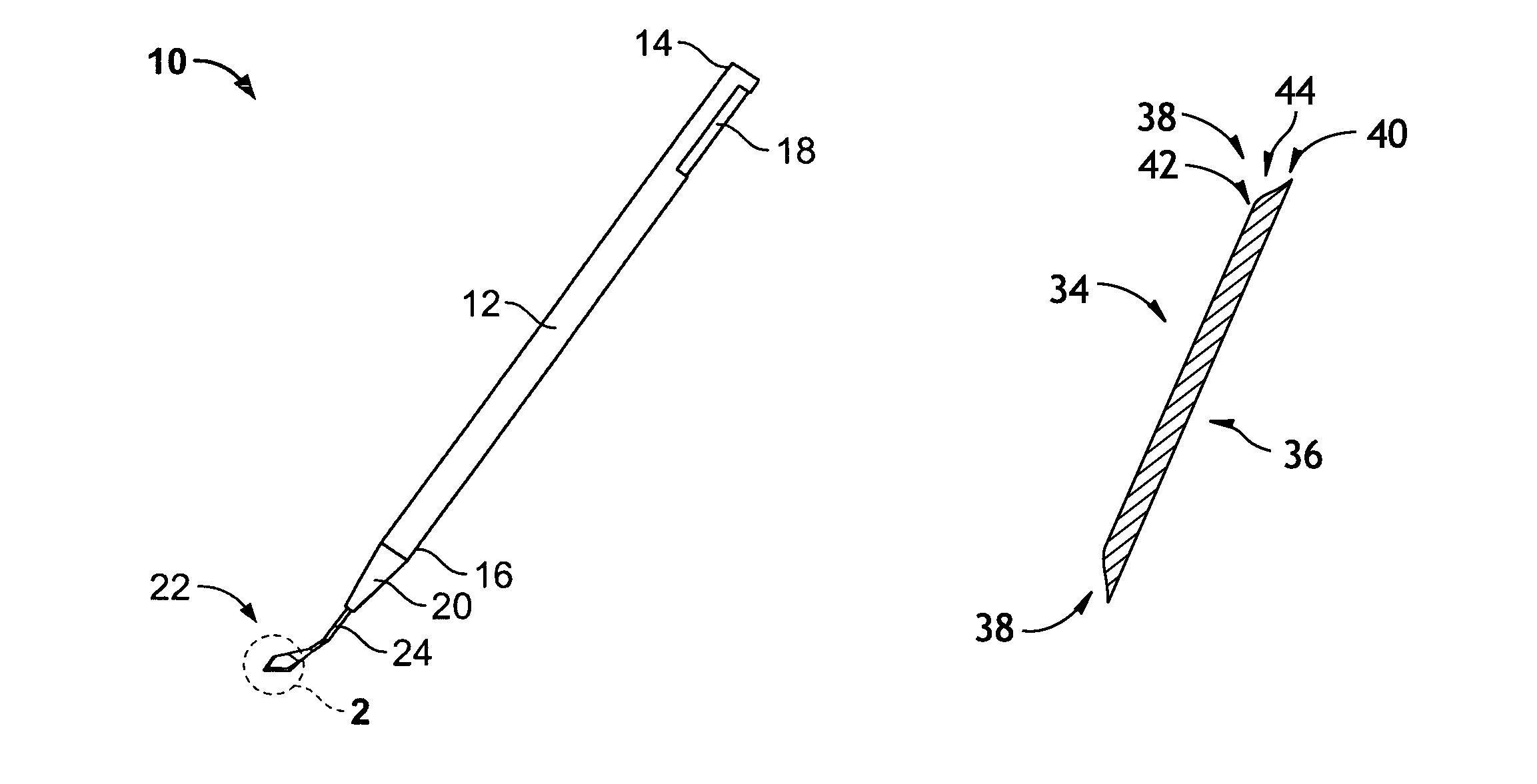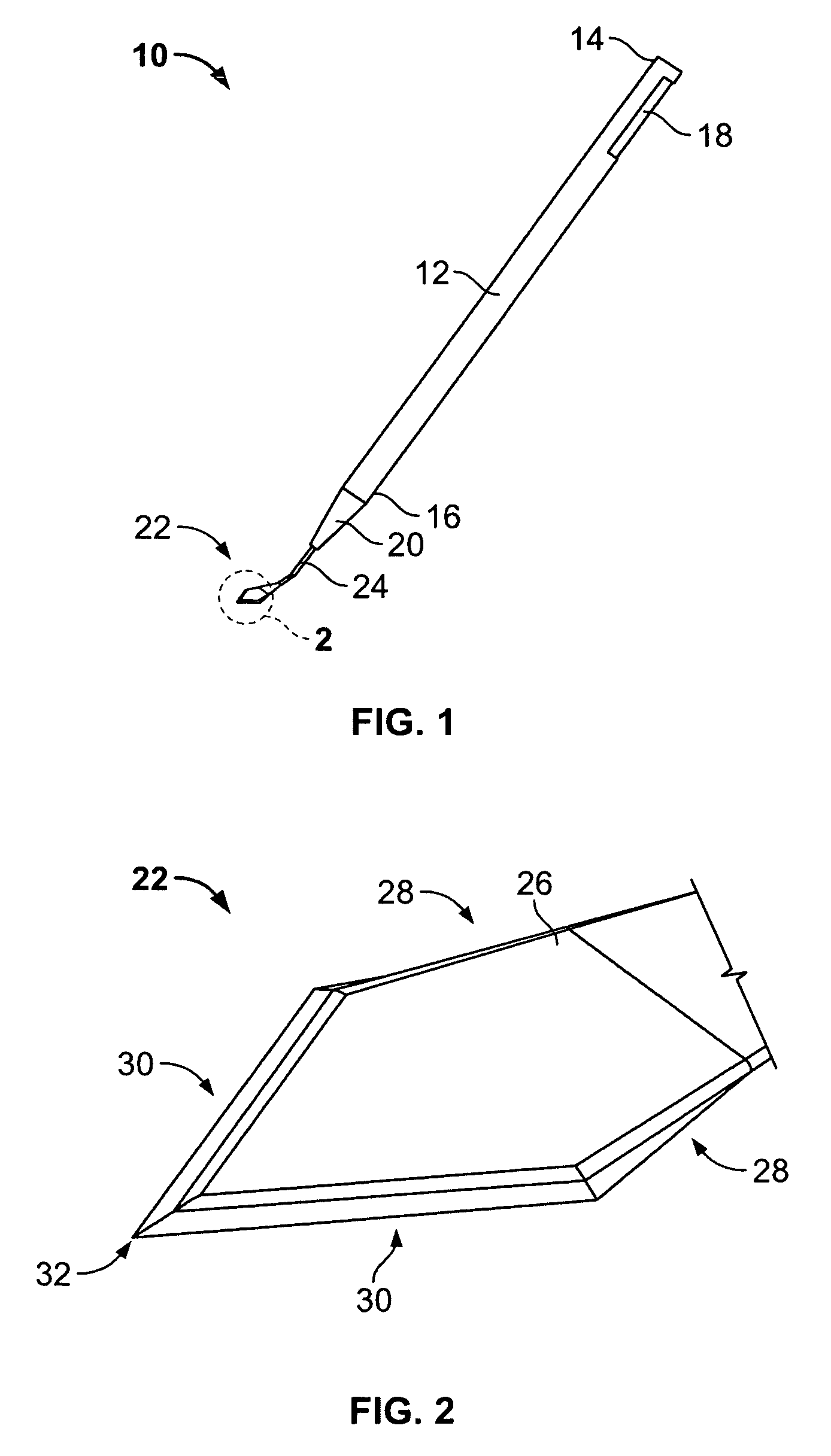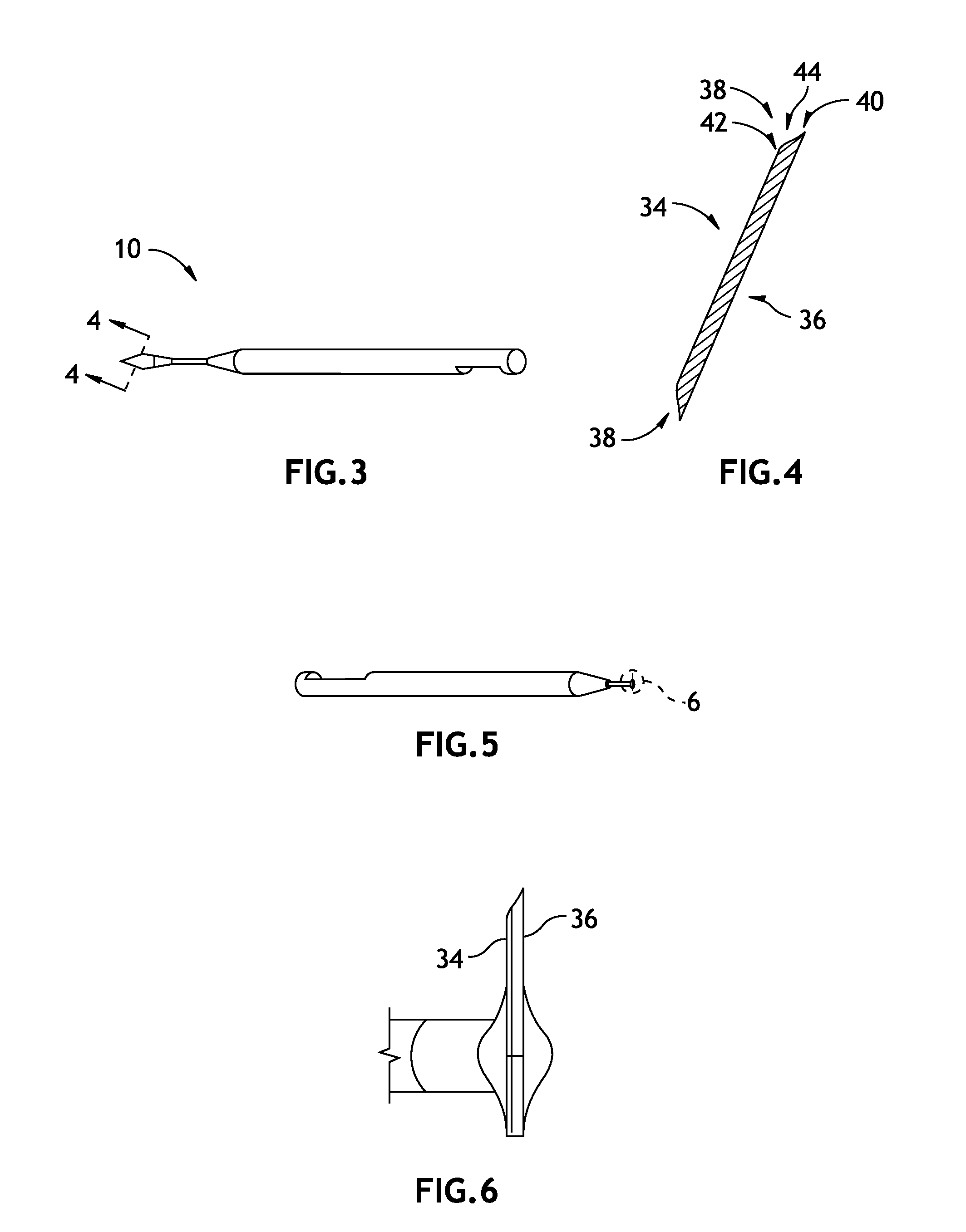Surgical knife blade with hollow bevel
a surgical knife and hollow bevel technology, applied in the field of surgical knife blades, can solve the problems of reducing the surgeon's control of the incision structure, reducing the surgeon's control of the incision length, and limiting the precise length of incisions that can be precisely formed using conventional surgical knife blades, so as to reduce the force to penetrate the ocular tissue, improve the surgical outcome, and reduce the effect of wound trauma
- Summary
- Abstract
- Description
- Claims
- Application Information
AI Technical Summary
Benefits of technology
Problems solved by technology
Method used
Image
Examples
Embodiment Construction
[0018]FIG. 1 shows a surgical knife 10 which includes an elongated handle 12 having a proximal end 14 and a distal end 16. The proximal end 14 includes a notched portion 18 and the distal end 16 includes a tapered section 20. A blade 22 is connected to the distal end 16 of the handle 12 via a stem 24.
[0019]FIG. 2 shows an enlarged view of a portion of the blade 22 of FIG. 1. The blade 22 includes a blade body 26 having opposing rear cutting edges 28 that extend in a diverging manner from one another away from the stem 24. The blade body 26 further includes opposing front cutting edges 30 which extend from the opposing rear cutting edge 28 and toward one another where they meet at a distal tip 32.
[0020]FIG. 3 shows a top plan view of the surgical knife of FIG. 1. FIG. 4 shows a cross section of the blade body 26 taken along line 4-4 of FIG. 3. FIG. 4 shows that the blade body includes a top side 34 and a bottom side 36. FIG. 4 also shows that the cutting edge 38 includes a concave ra...
PUM
 Login to View More
Login to View More Abstract
Description
Claims
Application Information
 Login to View More
Login to View More - R&D
- Intellectual Property
- Life Sciences
- Materials
- Tech Scout
- Unparalleled Data Quality
- Higher Quality Content
- 60% Fewer Hallucinations
Browse by: Latest US Patents, China's latest patents, Technical Efficacy Thesaurus, Application Domain, Technology Topic, Popular Technical Reports.
© 2025 PatSnap. All rights reserved.Legal|Privacy policy|Modern Slavery Act Transparency Statement|Sitemap|About US| Contact US: help@patsnap.com



